Kir2.1 is important for efficient BMP signaling in mammalian face development
- PMID: 29571612
- PMCID: PMC6148416
- DOI: 10.1016/j.ydbio.2018.02.012
Kir2.1 is important for efficient BMP signaling in mammalian face development
Abstract
Mutations that disrupt the inwardly rectifying potassium channel Kir2.1 lead to Andersen-Tawil syndrome that includes periodic paralysis, cardiac arrhythmia, cognitive deficits, craniofacial dysmorphologies and limb defects. The molecular mechanism that underlies the developmental consequences of inhibition of these channels has remained a mystery. We show that while loss of Kir2.1 function does not affect expression of several early facial patterning genes, the domain in which Pou3f3 is expressed in the maxillary arch is reduced. Pou3f3 is important for development of the jugal and squamosal bones. The reduced expression domain of Pou3f3 is consistent with the reduction in the size of the squamosal and jugal bones in Kcnj2KO/KO animals, however it does not account for the diverse craniofacial defects observed in Kcnj2KO/KO animals. We show that Kir2.1 function is required in the cranial neural crest for morphogenesis of several craniofacial structures including palate closure. We find that while the palatal shelves of Kir2.1-null embryos elevate properly, they are reduced in size due to decreased proliferation of the palatal mesenchyme. While we find no reduction in expression of BMP ligands, receptors, and associated Smads in this setting, loss of Kir2.1 reduces the efficacy of BMP signaling as shown by the reduction of phosphorylated Smad 1/5/8 and reduced expression of BMP targets Smad6 and Satb2.
Copyright © 2018 Elsevier Inc. All rights reserved.
Figures


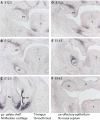
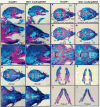
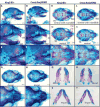
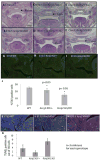
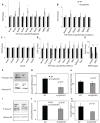
References
-
- Hibino H, et al. Expression of an inwardly rectifying K+ channel, Kir5.1, in specific types of fibrocytes in the cochlear lateral wall suggests its functional importance in the establishment of endocochlear potential. Eur J Neurosci. 2004;19(1):76–84. - PubMed
-
- Massa O, et al. KCNJ11 activating mutations in Italian patients with permanent neonatal diabetes. Hum Mutat. 2005;25(1):22–7. - PubMed
-
- Vaca L, Licea A, Possani LD. Modulation of cell membrane potential in cultured vascular endothelium. Am J Physiol. 1996;270(3 Pt 1):C819–24. - PubMed
-
- Plaster NM, et al. Mutations in Kir2.1 cause the developmental and episodic electrical phenotypes of Andersen's syndrome. Cell. 2001;105(4):511–9. - PubMed
-
- Tawil R, et al. Andersen's syndrome: potassium-sensitive periodic paralysis, ventricular ectopy, and dysmorphic features. Ann Neurol. 1994;35(3):326–30. - PubMed
Publication types
MeSH terms
Substances
Grants and funding
LinkOut - more resources
Full Text Sources
Other Literature Sources
Research Materials

